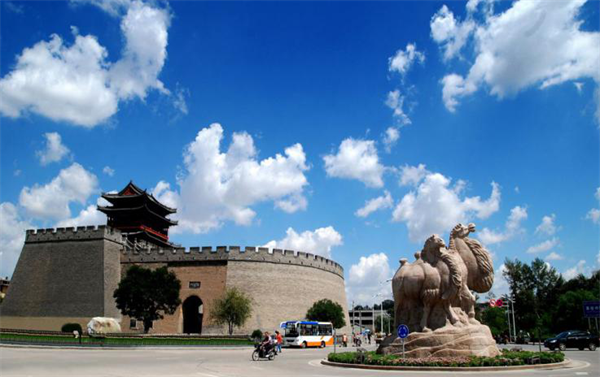- CURRENT LOCATION: HOME
- >> Tourism
- >> Attractions in Cities
- >>
- Yulin
Yulin Travel Tips
2024-04-16 11:17:00 , Source : The Government Website of Shaanxi Province
History: As early as the Paleolithic and Neolithic Ages, human beings already lived in this area. Named as Shangjun, it once belonged to Qin State in the Warring States Period, and was then one of the 36 shires of the Qin Dynasty (221BC-206BC). In the Eastern Jin Dynasty (317-420), a king of the Huns established Daxia Kingdom and set capital in Tongwan City (today's Jingbian County). In the Tang Dynasty (618-907), Yulin area was divided into three states, which were then combined into two new ones Yulin and Suide. In 1949, the city was liberated under the lead of China's Communist Party. In 2000, it turned into a prefecture-level city from a county-level one.

Physical Features: The ancient Yulin Great Wall divides the area. To the north, it is flat sand and grass. To the south, it is loess hills and ravines. To the southwest, it is low mountains and hills, from where many rivers in the city start.

Local Highlights: Yulin is not only a historical city with long histories, but also the energy supply base of both Shaanxi and the country. 48 kinds of natural resources have been discovered there, among which coal, oil and natural gas are the richest. Shenfu Coal Field has been ranked among the eight largest coal fields in the world. The city also has the largest natural gas field in present China. In addition, it has colorful and profound local art culture. Various folk songs (Daoqing, duet singing and dance), local talk and singing, and Yangge (a dance performance) are famous and popular throughout China.

Special Local Products: Handicrafts: paper-cutting, stone sculpture, hand-knitted carpet, willow knitting
Foods: red Chinese dates, millet

Government Organizations



Other Links

Copyright@www.shaanxi.gov.cn All Rights Reserved
Registration Number:陕ICP备10004160号
